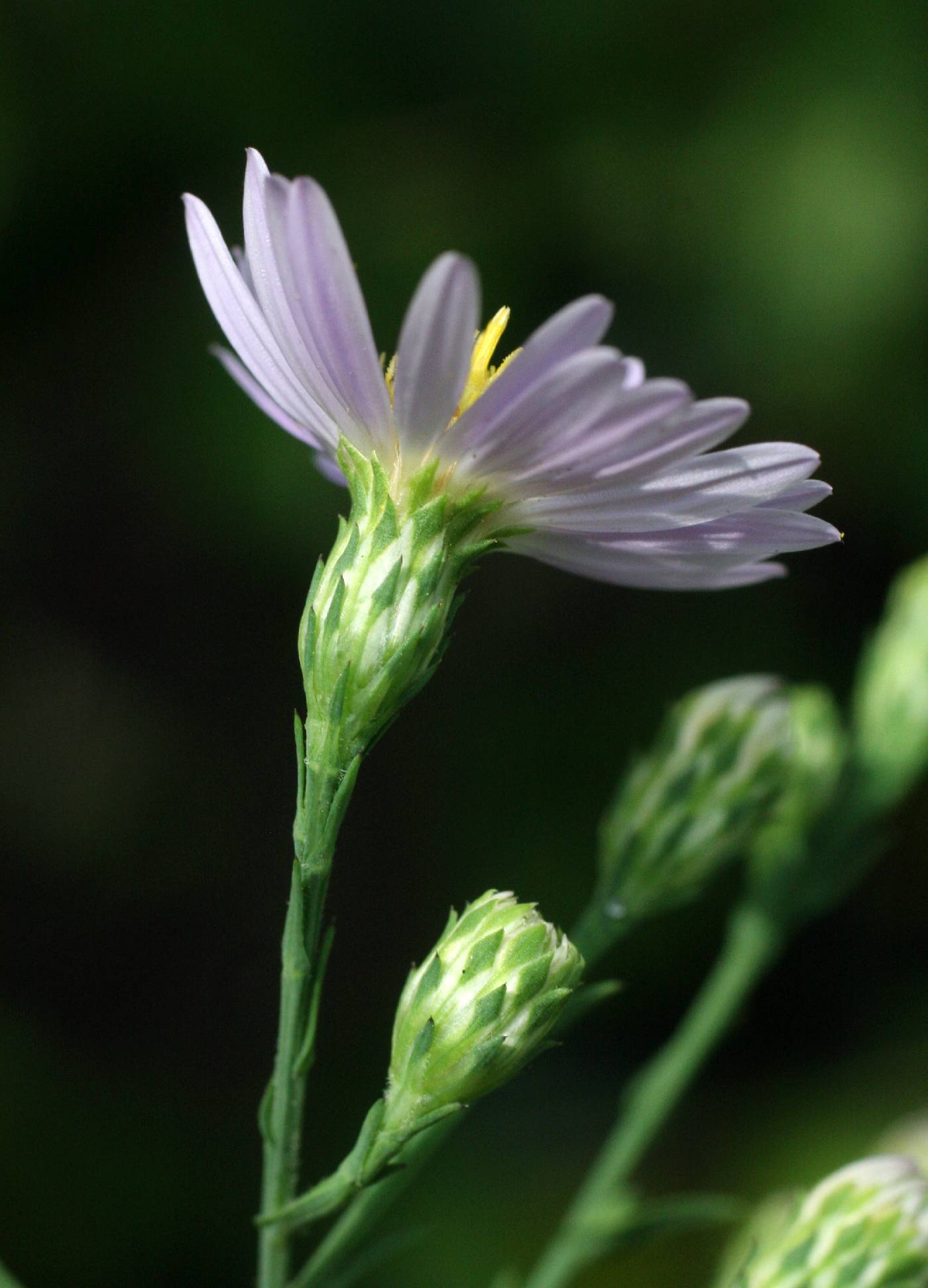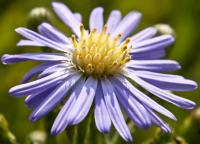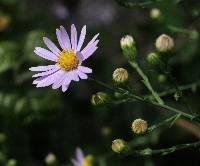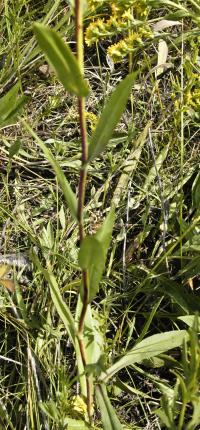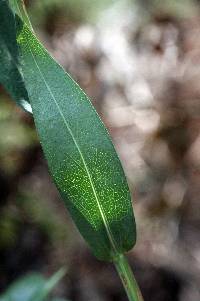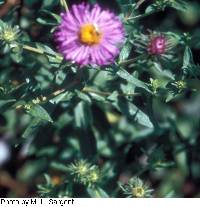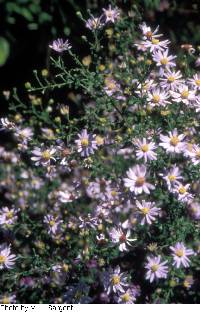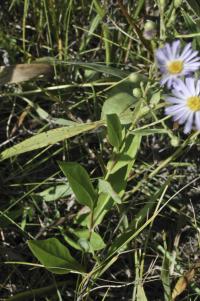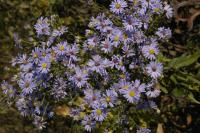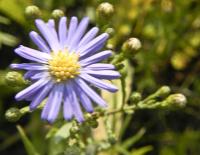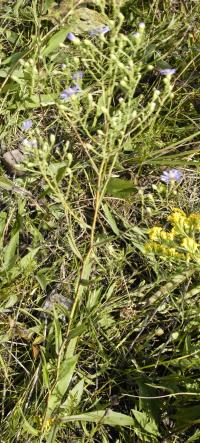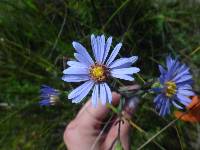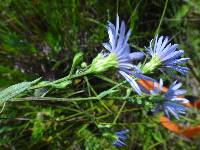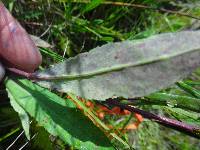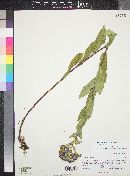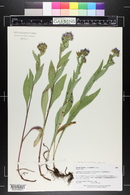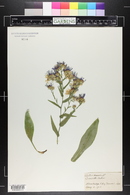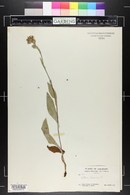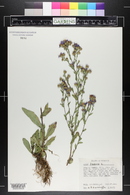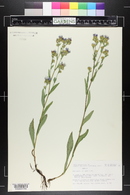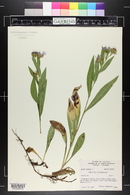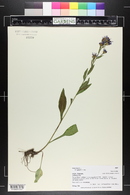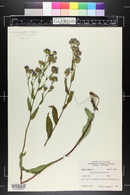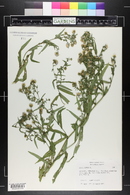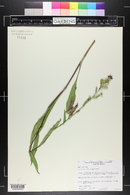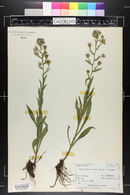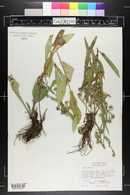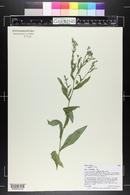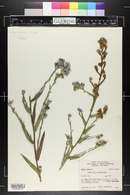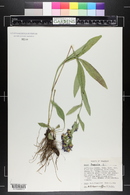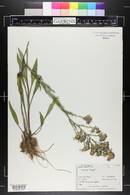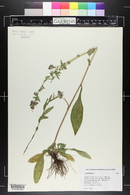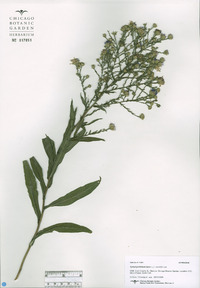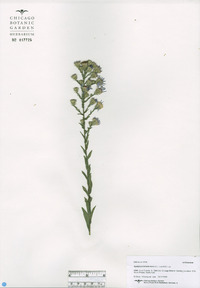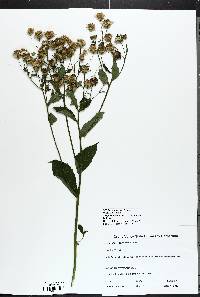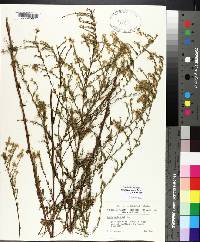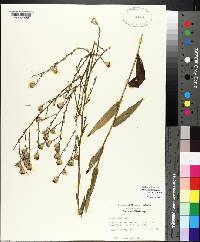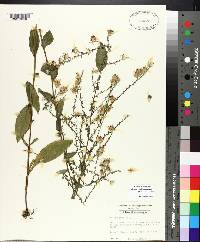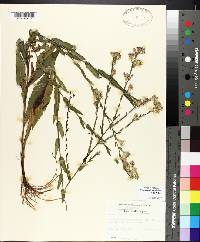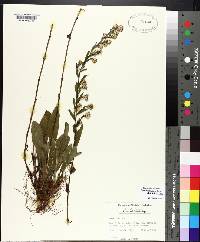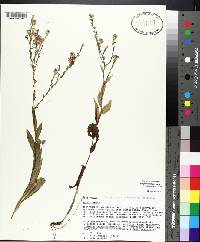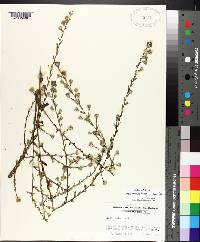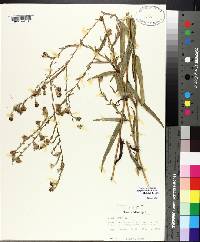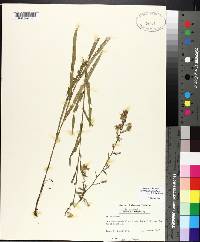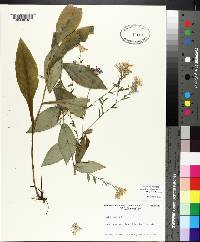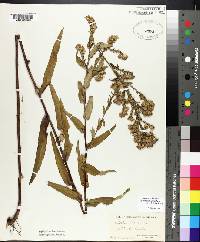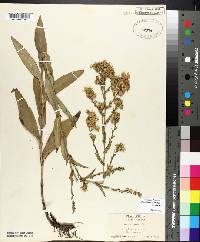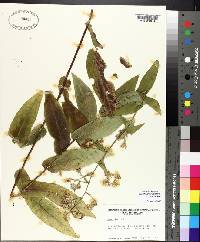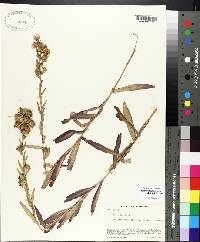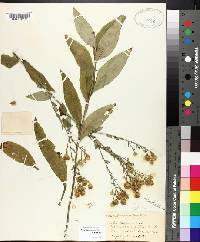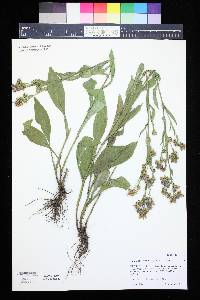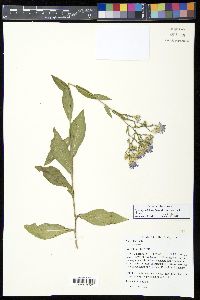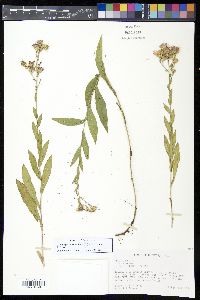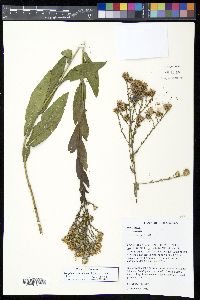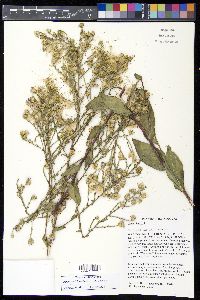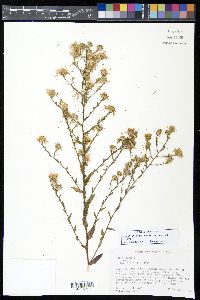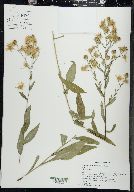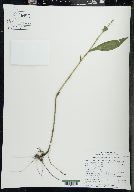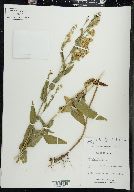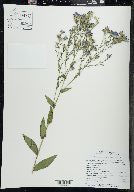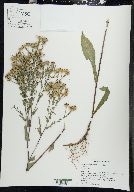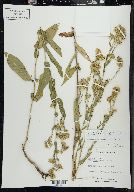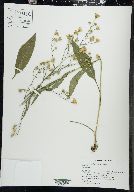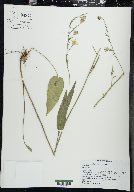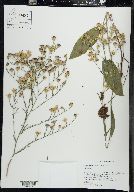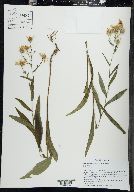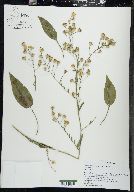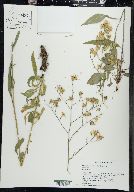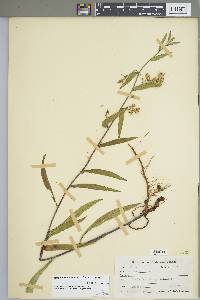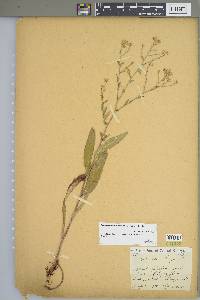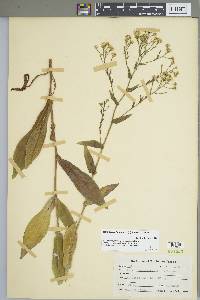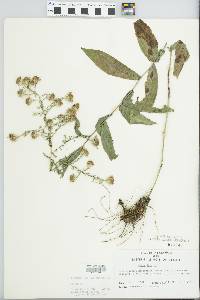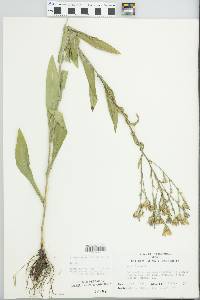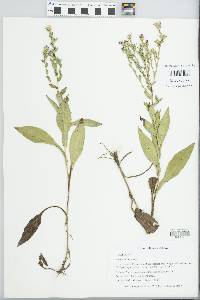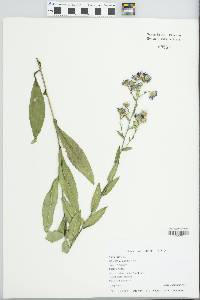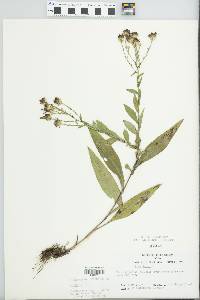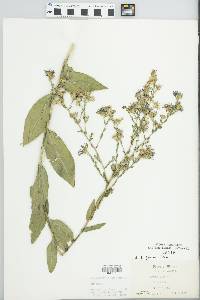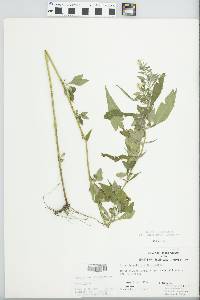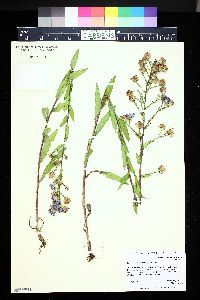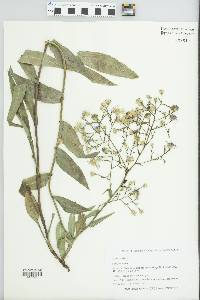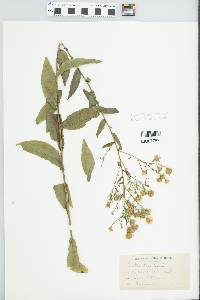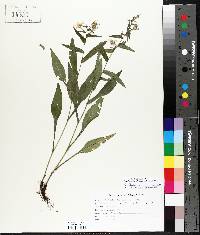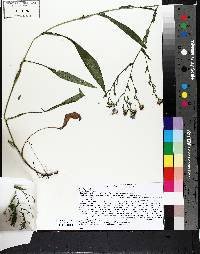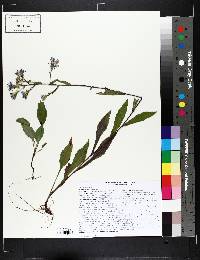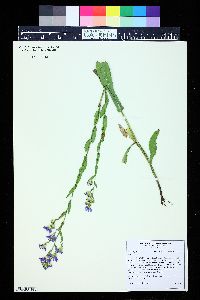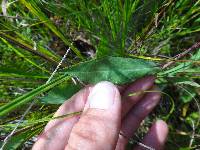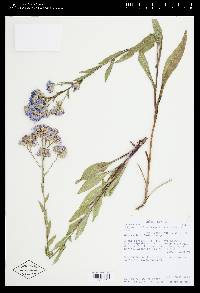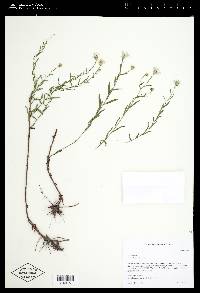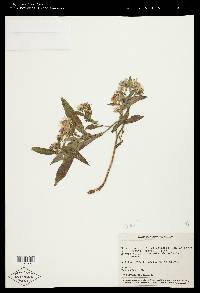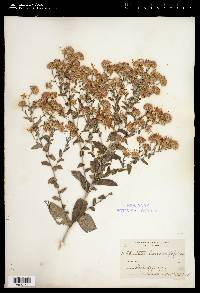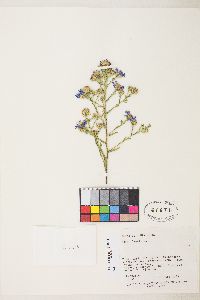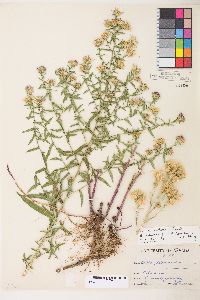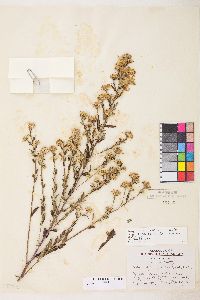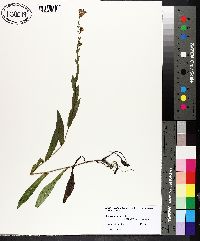Symphyotrichum laeve
|
|
|
|
Family: Asteraceae
Smooth Blue American-Aster, more...smooth blue aster
[Aster expansus, moreAster laevis L., Aster laevis var. abbreviatus Lunell, Aster laevis var. amplifolius Porter, Aster laevis var. sourisensis , Aster laevis var. strictiflora , Aster laevis var. undulatifolius Lunell, Symphyotrichum laeve subsp. laeve] |
Perennials (15-)20-70(-120) cm, cespitose; stoutly short-rhizomatous, with thick, woody caudices or a few, long rhizomes. Stems 1-5+, erect (straight, glaucous, sometimes reddish proximally), glabrous, sometimes sparsely hirsute distally. Leaves (glaucous) thick, firm, ± fleshy, margins crenate-serrate or -serrulate or entire, scabridulous, apices mucronulate, faces glabrous; basal usually withering by flowering or sometimes persistent (var. purpuratum), petiolate (petioles ± winged, bases dilated, sheathing), blades spatulate or oblong to ovate or lanceolate-ovate, 30-200 × 10-25(-30) mm, bases attenuate or cuneate to rounded, margins crenate-serrate to serrulate, apices acute to obtuse or rounded; proximal cauline often withering by flowering, petiolate or subsessile or sessile (petioles narrowly to broadly winged, clasping), blades ovate or oblong-ovate to lanceolate or linear-lanceolate, sometimes ± panduriform, (40-)80-150(-180) × (10-)20-45 mm, bases attenuate to rounded or ± shallowly auriculate-clasping, margins entire or shallowly crenate-serrate, minutely scabrous, apices acute or obtuse, callus-pointed; distal sessile, blades lance-ovate or lanceolate to linear, 7-45 × 1-14 mm, progressively reduced distally (abruptly so in arrays), bases auriculate and ± clasping to rounded, margins entire. Heads in broad, sometimes ± flat-topped, paniculiform arrays, branches stiffly ascending (rarely arching), leafy with small, gradually reduced branch leaves. Peduncles 0.2-6+ cm, glaucous, glabrous or puberulent in lines, bracts 3-6, densely spaced, subulate or linear-lanceolate to linear, subclasping, apices sometimes purplish, grading into phyllaries. Involucres campanulate to cylindro-campanulate, (4.2-)5-7(-8) mm. Phyllaries in 4-6 series, appressed, subulate or lanceolate (outer) to oblong-lanceolate or linear-lancolate or -oblanceolate, unequal (sometimes appearing subequal), bases indurate 1 / 2 - 3 / 4 , margins scarious, erose, hyaline, ciliolate distally, green zones mostly diamond-shaped to ± lanceolate (some inner, or most in var. geyeri), apices acute to acuminate, sometimes ± obtuse, red-mucronate or apiculate, faces glabrous. Ray florets (11-)13-23(-34); corollas usually pale to dark blue or purple, seldom white, laminae (6-)7.2-11.3(-14.6) × 1.5-2.5 mm. Disc florets (17-)19-33(-43); corollas yellow turning purplish red, 3.5-6.1 mm, tubes sligh Plants 3-10 dm from a short, stout rhizome or branched caudex, sometimes with short, slender, creeping red rhizomes as well; herbage glabrous except occasionally for some puberulent lines in the infl, commonly ±glaucous; lvs mainly cauline, thick and firm, highly variable in size and shape, but the larger ones more than 1 cm (often more than 2.5 cm) wide and often less than 5 times as long as wide, entire or sometimes toothed, sessile and ±strongly auriculate-clasping, the lower tapering to a winged petiole and scarcely clasping, those of the infl reduced and often bract-like, broadest at the clasping or subclasping base; heads several or many in an open infl; invol 5-9 mm, its firm, appressed, acute bracts conspicuously imbricate in several series, with short, diamond-shaped green tip mostly 1-2 mm; rays 15-30, blue or purple, 8-15 mm; achenes glabrous or nearly so; pappus usually reddish; 2n=48. Open, usually dry places; Me. to B.C., s. to Ga., Ark., and N.M. Most of our plants are var. laevis, as described above. The western var. geyeri A. Gray, with the invol bracts fewer-seriate, narrower, and more sharply pointed, their green tips more elongate, extends into our range from Minn. to Mo. (A. geyeri; A. laeviformis) Gleason, Henry A. & Cronquist, Arthur J. 1991. Manual of vascular plants of northeastern United States and adjacent Canada. lxxv + 910 pp. ©The New York Botanical Garden. All rights reserved. Used by permission. |
|
|
|

